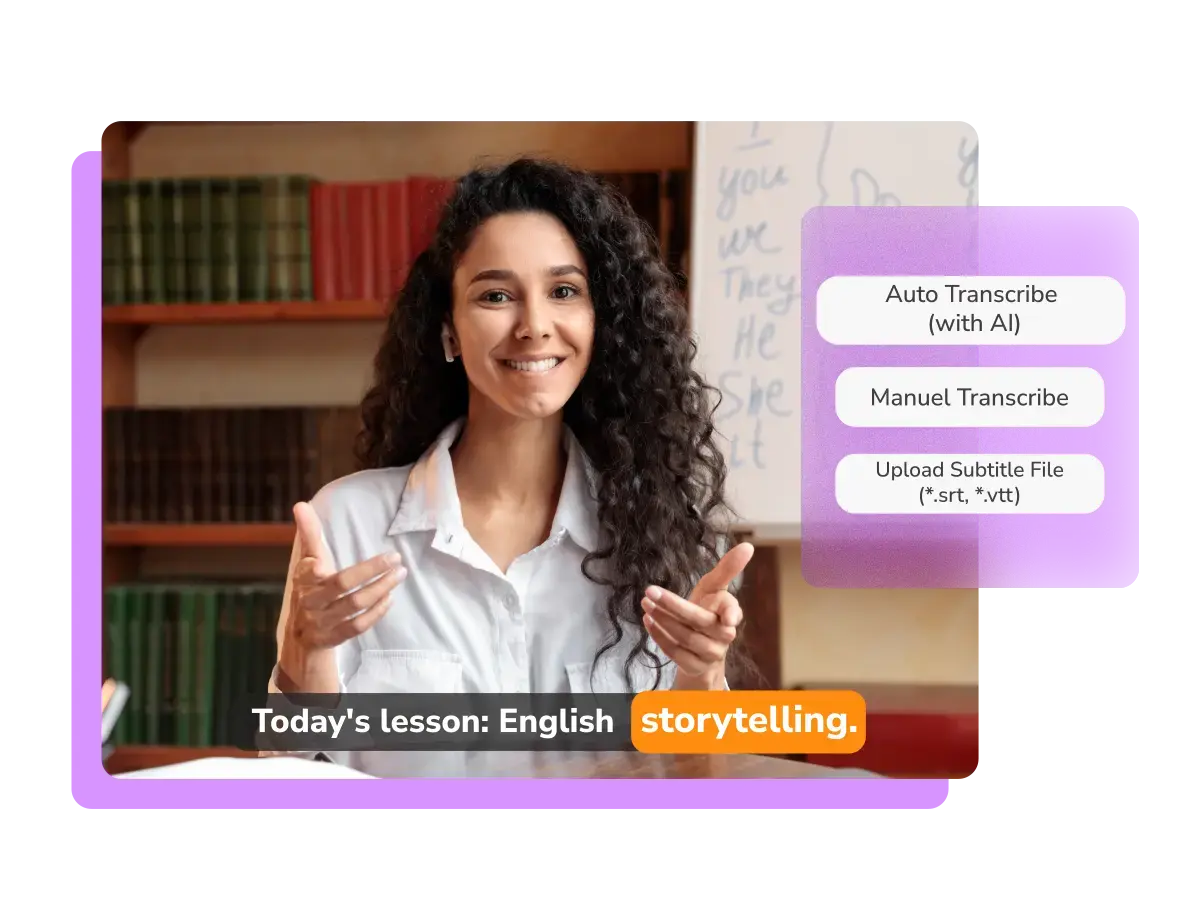What are subtitles and closed captioning?
Subtitles and closed captioning are text-based representations of spoken dialogue and essential audio information in a video. Subtitles mainly display spoken words within the video, while closed captions also include sound cues or speaker identifiers for even further clarity. Both improve accessibility, support multilingual audiences, and enhance comprehension across different viewing environments.
Definition of subtitles and closed captioning
Subtitles and closed captioning display text on-screen to help viewers follow spoken content or understand audio elements. Subtitles typically represent dialogue, while closed captions cover a broader range of sounds such as music, background effects, or tone indicators. Some advanced video hosting platforms allow you to add subtitles and closed captions to videos as well as ensure text layers stay synchronised with playback and work consistently across devices. Common components include:
- Dialogue transcription: Converts spoken words into readable on-screen text.
- Audio description cues: Adds labels for sound effects, music, or important atmosphere changes.
- Speaker identification: Helps viewers understand who is speaking in multi-voice content.
- Language localisation: Presents text versions for multilingual audiences.
- Timed text alignment: Ensures captions appear at the correct moment during playback.

Why do subtitles and closed captioning matter?
Subtitles and closed captions make video content accessible to wider audiences. Viewers who are deaf or hard of hearing depend on closed captions to understand audio-driven content, while multilingual audiences may rely on subtitles to follow dialogue in their preferred language.
Even for general viewers, captions improve clarity in noisy environments, silent viewing situations, or when processing complex information. For brands and educators, this improves message retention and ensures content is inclusive across all audience groups.
What are the benefits of subtitles and closed captioning?
The main benefits include improved accessibility, better comprehension, and increased engagement. Captions also support search visibility by providing text-based metadata that platforms and algorithms can index.
With tools like ai-generated subtitles, teams can create accurate caption tracks efficiently. Some solutions also allow organisations to translate their videos, which gives them the opportunity to localise their content for global audiences without needing separate video versions.
Applications of subtitles and closed captioning
Subtitles and closed captions are used across education, entertainment, marketing, and enterprise communication. Learning providers use captions and transcripts to support accessibility standards in online courses. Media teams rely on subtitles when publishing videos on social platforms where many viewers watch without sound. Corporate teams add captions to training or compliance content to meet internal accessibility requirements and accommodate global staff.
Cinema8 strengthens these use cases by enabling teams to add captions directly within their workflow, while localisation needs can be met with language tools built for scalability.
How Cinema8 uses subtitles and closed captioning
Cinema8 lets teams upload, edit, or generate AI-powered subtitles and align them automatically with video timelines. Users can create multiple language tracks, adjust timing, or correct transcripts within the platform.
Captions work across Cinema8’s interactive features, meaning overlays, quizzes, and prompts remain fully accessible. With responsive playback and secure hosting, Cinema8 ensures that captions display consistently across devices, regions, and embedded environments, supporting inclusive and professional video delivery.
Book a demo to see how Cinema8 helps you add subtitles and captions that make your videos clearer, more accessible, and ready for global audiences.